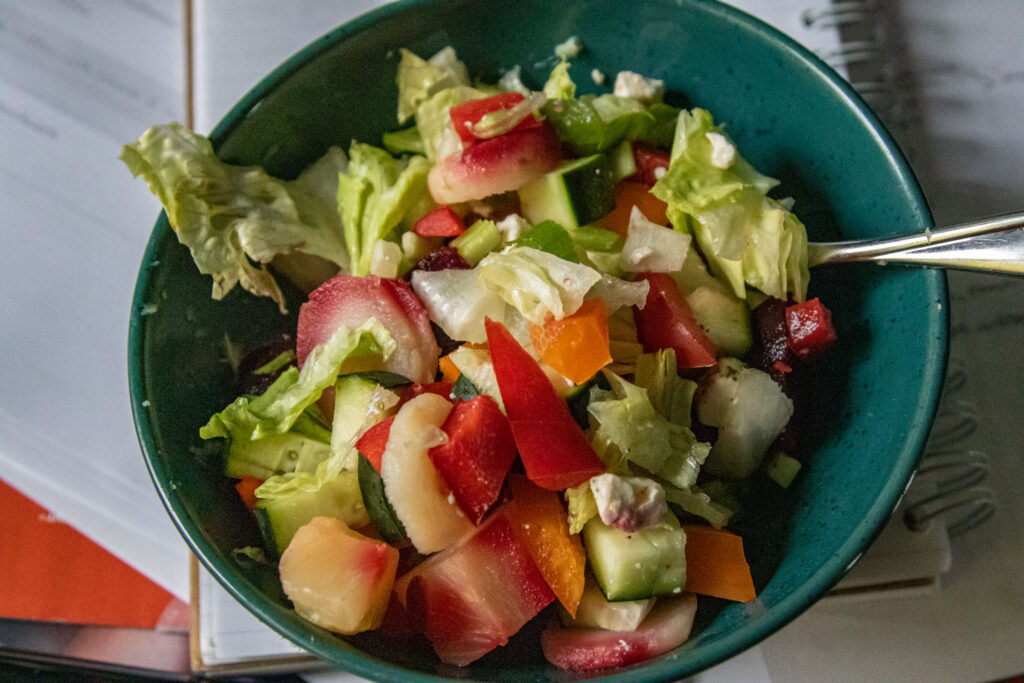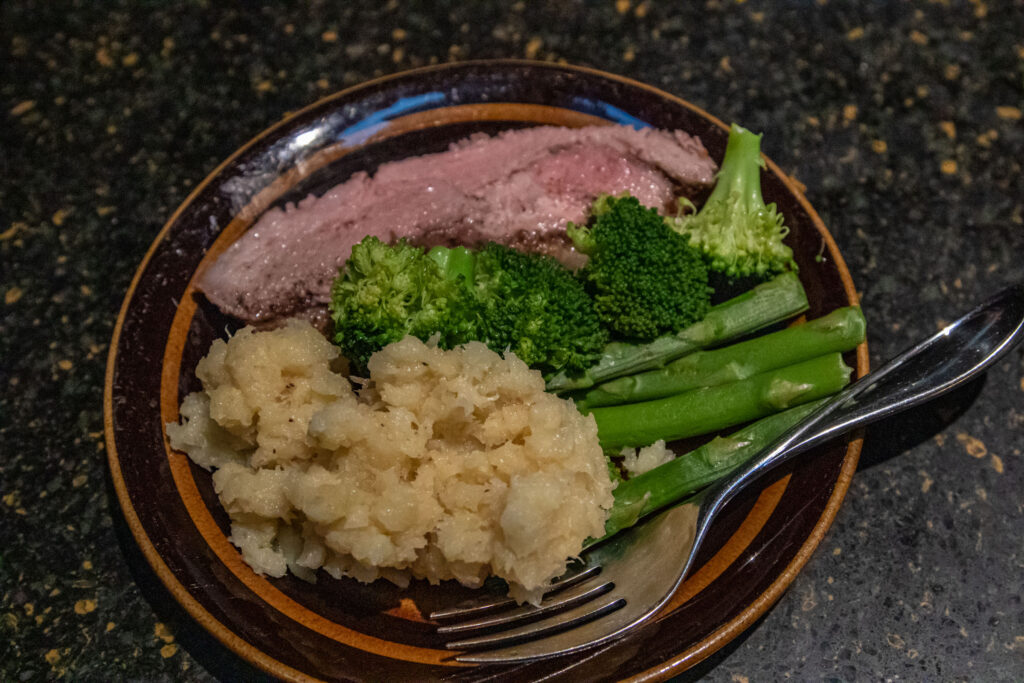Imagine walking into the supermarket after a hard day at work. You’re borderline hangry, and you want food. Now. At times like this, it’s easy to grab the first thing you find and stuff it in your face. You’ll deal with the consequences later. But if you know in advance what’s on your unique food list, you can make much better decisions that support your health and well-being.

Unique Food List: Traffic Light Method
In June, I shared a blog post, How to eat is more important than what to eat. You can use the “traffic light” eating method to create your own personal power-food list of what to eat. Precision Nutrition coaches use this technique to help people identify foods that provide energy, help improve sleep, and support balanced moods.
Grab a pen and paper and jot down your thoughts as you read the following questions.

Green-Light Foods: What Makes You Feel Awesome?
Green-light foods make you feel good nearly every time you eat them—physically and emotionally.
You digest them well, you like the taste, and you have a healthy relationship with them. (Read: You can count on them for regular nourishment; you’re not just calling them up when you’re emotionally challenged.)
These differ widely from person to person. My husband loves steak and Jasmine rice while I prefer pork and baby gold potatoes. And my daughter (bless her youth) can still eat gluten without problems.

I work with a couple who have similar hiking and skiing objectives, but one swears by liver pate while the other must consume carbohydrates. Yes, cooking for each individual’s diet needs in a large family can be tricky. But start by looking for where your traffic light lists overlap. Maybe you can find foods everyone can enjoy — and feel good eating.
Yellow-Light Foods: What Foods Work — Sometimes?
You might like these foods, but when you eat them regularly or in larger portions, you don’t feel too great. For example, a small portion of lentils may be fine, but a big bowl makes you blame the dog for the sudden odor in the room.
Alcohol and organic chips could wind up in this category, but so could kale or tomatoes.

What’s more, these can change frequently. For months my husband was eating fermented foods (to my daughter’s dismay) and then realized something had changed. He shifted to adding tomato sauce or hot sauce for flavoring. I find that raw tomatoes sometimes give me cold sores, but cooking tomatoes in a gluten-free lasagna is fine.
Red-Light Foods: What Makes You Hide After Eating Them?
There is no “bad food” per se, but red-light foods sure can make you feel bad. They might cause allergic reactions or indigestion. They could contribute to diarrhea, constipation, or bloat. Certain foods might make you feel like you’ve gained fifteen pounds overnight. Or perhaps they make you feel like you’ve lost all control.
Ultra-processed foods fall into this category. Most people find that, once they start eating them, they can’t stop. These include doughnuts, cookies, chips, crackers, sugary cereals, and even some granola bars. Packed with sugar, fillers, sodium, and chemicals, they have been manufactured to make people buy more. Cha-ching!

So-called “healthy” foods can also be on a person’s red-light list. For example, if you have a reaction to shellfish, they’re red. If you experience diarrhea after having yogurt or milk, dairy foods may be red-light foods for you. I have found that I get congested and sniffly anytime I have the smallest amount of gluten.
While I do not have celiac disease (meaning I won’t die from gluten), my sensitivity means anything containing gluten is red. Once you’ve identified how to live a healthy lifestyle, you won’t want to go back to constant congestion.
Your Unique Food List Is Yours Alone
Consider how certain foods make you feel and think about yourself:
- Does this food feel good in my body?
- Do I get energy or feel sluggish after eating this food?
- Does this food align with my culture and values, if that’s important to me?
- Do I like how I behave when I’m around these foods?
- Do I feel guilty about eating something?

When you choose foods that are from your green list, with a little yellow (think 10% “cheat meals” during a week, or two weekly meals), and avoid the red, you’ll probably find yourself eating much healthier. But more importantly, you’ll feel a greater sense of autonomy, flexibility, and enjoyment when you eat.
How have your food preferences changed over time? Do you have challenges in your household finding foods everyone can agree on? Leave a question or comment for me. I love hearing from readers.


Listening to your body is important after eating. Over the years, my diet has changed. I have now gluten intolerance. Finally, I gave up chocolate. This was the most difficult thing to do. Alcohol was super easy to stop. I still drink coffee, but only 2 cups in the morning.
To keep a food diary, help you to identify the food you should not have.
Great article!
Keeping a food diary is an excellent suggestion. To do so, record any anomalies 10 and 30 minutes after eating, as well as several hours (when the food hits different parts of your digestive system). You can also record heart rate — foods that disagree with you will likely spike your heart rate (sugar, especially). And yes, giving up any food you really enjoy is challenging. When you have a big enough “why” it will make it that much more likely to “stick.” Thanks for the comment and insights, Silvie Marie!